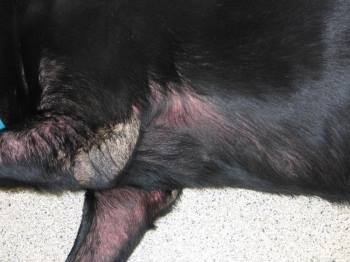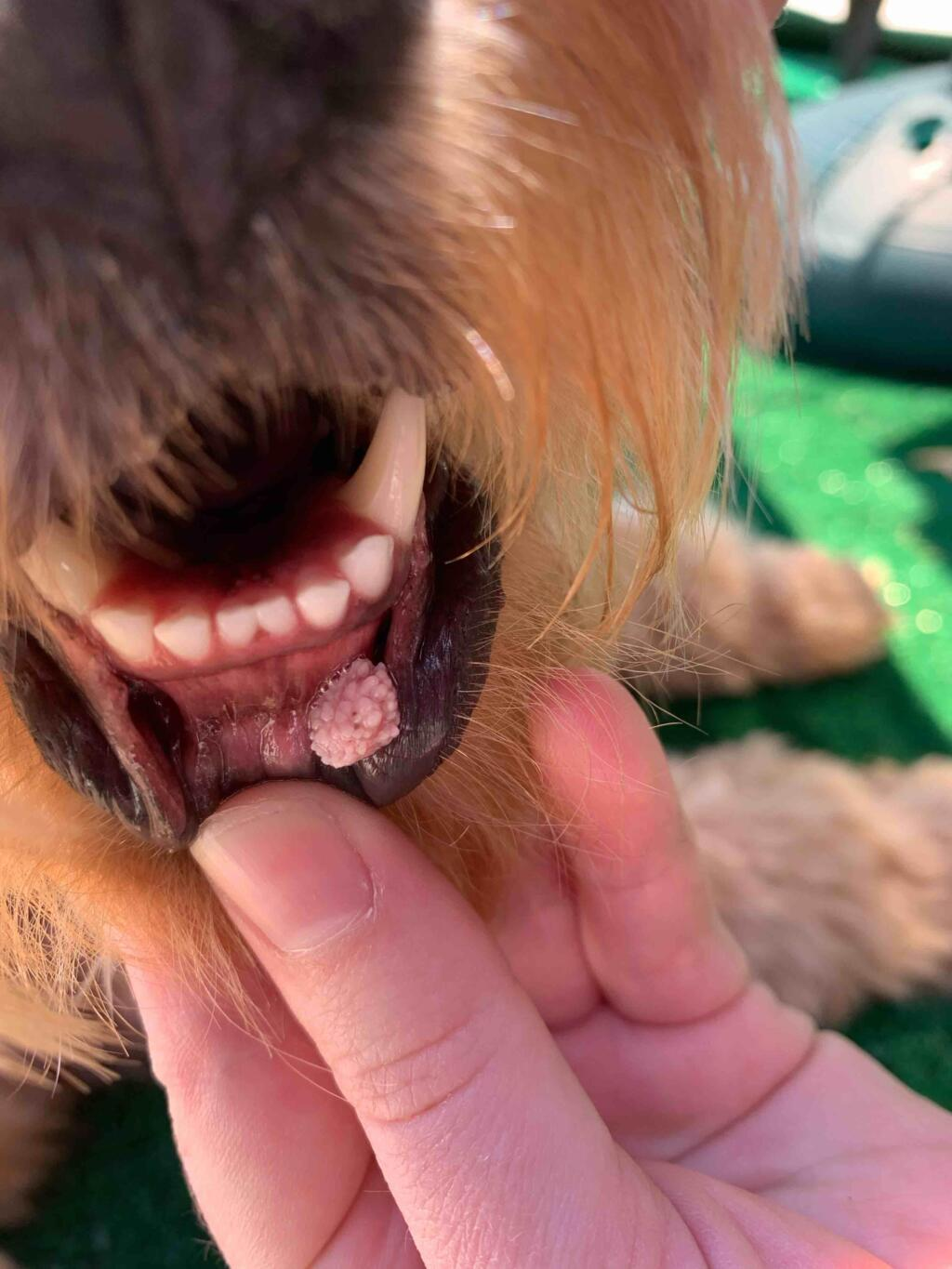9 Common Skin Diseases For Dogs In Malaysia (with pictures)
The skin is the largest organ, contributing up to 24% of a dog's body weight. As such, it's no wonder that dog skin is susceptible to a large number of skin Diseases-in-malaysia-and-how-to-protect-your-pet-with-Insurance">Diseases and problems. Let's discuss the most common skin disease in dogs, from the most to least common in Malaysia.
1. Allergic dermatitis
Allergies to the environment, food or other possible triggers often manifest as skin problems in dogs. Common symptoms of allergic dermatitis include dog skin itching or scratching, either on a particular area (i.e. armpits, feet or flank) or the whole body. Allergic dermatitis can also cause red rashes, hardened skin, and flaky dog skin.

The most important way to treat allergic dermatitis is to identify the allergen and avoid future contact. Moreover, a veterinarian may prescribe anti-inflammatory and “anti-itch” medications for your dog to prevent the worsening of the condition.
2. Fleas and ticks
Fleas and ticks are the two most common parasites contributing to dog skin problems. Fleas usually infest the surface of dog skin, causing the dog to itch or scratch its body excessively. This would consequently lead to blood loss, bleeding, or hair loss when left untreated for a long time.
On the other hand, ticks are slightly larger compared to fleas. They carry harmful diseases that are highly contagious. When a dog gets a tick bite, it may start showing symptoms of tick-borne diseases such as fatigue, vomiting, and diarrhoea.

Moreover, fleas and ticks are highly contagious and can be passed on to the pet parent. That being so, it’s crucial to treat flea or tick infestation on dogs promptly with a suitable medication regimen.
3. Scab
Scab in dogs describes a crusty, flaky skin layer that forms over bites, cuts, or grazes. Scab tissues are made of blood cells, proteins, skin cells, and collagen. It acts as a “natural band-aid” to prevent dogs from excessive blood loss or bacterial infection after an injury.
The common areas where dog scabs can appear include the back, ears, nose, and sides of the body. If your dog has an isolated scab, it will usually heal on its own over a few weeks without any medical treatments.

However, if the scab is widespread and non-healing, the scabs may be secondary to an underlying disease. That being so, you should bring your dog to the veterinarian as soon as possible.
4. Yeast infection

Yeasts are single-celled microorganisms naturally found on dog's skin and ears. Yeast infections occur when the imbalance in yeast proportion in the ears or skin surfaces. Symptoms of dog yeast infection are redness, itchiness, and a sweet or musty odour. You can prevent yeast infections in dogs by keeping your pup’s skin and ears dry and clean at all times.
5. Mange
Mange is a dog skin problem that’s caused by mites. This dog skin disease's hallmark symptoms are intense itching, red skin, sores, and noticeable hair loss. Mange in dogs comes in two main categories: sarcoptic mange and demodectic mange.

Sarcoptic mange, also known as canine scabies, is highly contagious and can spread amongst or even to humans. On the other hand, demodectic mange is not contagious and non-transmissible. Mange often affects the ears, face, and legs of dogs.
6. Oral papilloma
Oral papilloma, also known as viral papilloma, is a small tumour-like growth in the dog's mouth caused by papilloma viruses. This dog skin problem commonly affects young puppies (2 to 3 months of age) or older dogs with low immunity. Symptoms of viral papilloma in dogs include bad breath, soreness around the mouth, and difficulty eating.

Most oral papillomas will resolve themselves within a few months. Nonetheless, if the tumour-like growth begins bleeding or becomes bigger, it's best to consult a veterinarian for further investigations.
7. Impetigo
Impetigo is a bacterial infection characterized by pus-filled blisters on hairless areas of the abdomen. Impetigo lesions may break when scratched, resulting in the formation of scabs on the skin.

Antibiotics and medicated shampoos may sometimes be indicated for treating impetigo infection. In more severe cases, a veterinarian would take a bacterial culture and X-rays to identify if there are any underlying causes of impetigo.
8. Ringworm
Ringworms are the most common dog skin fungus infection, affecting up to 65% of dogs worldwide. This dog skin disease appears in crusty, circular patches at the head, paws, ears, or front of dog's legs.

Ringworms are highly contagious to both humans and other animals. Appropriate anti-fungal treatment is indicated for the treatment of ringworms.
9. Folliculitis
Folliculitis is a dog skin disease that’s caused by the inflammation of the hair follicles secondary to a bacterial or fungal infection. This condition causes symptoms such as bumps and sores on the affected skin area.

Moreover, folliculitis tends to form on skin surfaces that are hairless and hard to spot, like the inner thighs or paws. You may visit a veterinarian to get a prescription for medicated shampoos, oral antibiotics, and ointments to help treat folliculitis and soothe the associated infection.
Frequently Asked Questions
Are skin diseases curable for dogs?
Yes. Although finding out your dog has a skin problem can be challenging, the process of treating it is comparatively straightforward. Most dog skin diseases are treatable with appropriate medical treatment and care.
The treatment modalities for dog skin diseases mainly depend on the type and severity of the skin condition. You may often find veterinarians prescribing antibiotics, antifungal creams, anti-inflammatory medications, or medicated shampoos for dog skin problems. Additionally, your veterinarian may also recommend nutritional supplements to prevent the recurrence of dog skin diseases.
How do you treat skin disease in dogs?
Treating skin diseases in dogs requires consistency and patience. Remember to give any prescribed medication to your dog as advised by a professional veterinarian.
You should also monitor for improvement or worsening of the skin symptoms. In cases of worsening symptoms, you must follow up with the veterinarian to identify if there’s a more insidious cause behind the skin condition.
When should I take my dog to the vet for skin problems?
Ideally, you should consult a veterinarian as soon as you notice changes in the colour, texture, or odour of your dog's skin. You must also pay close attention to changes in your dog's behavior, diet, or environment. These are pertinent information that may help veterinarians to identify and diagnose your dog's skin condition correctly.
Bottomline
Nothing is more worrisome than seeing your dog in distress or pain. Therefore, you must take great care of your dog's health—both inside and outside.
Skin conditions can be expensive to treat. But as pet parents, we'd want only the best care and treatment for our fur kids. One solution to this is to get pet insurance for your pets! This protects them and ensures you don't have to deal with unexpected, high vet bills.
Get in touch with us in Oyen Pet Insurance to discuss the best insurance plan for your pet!

















